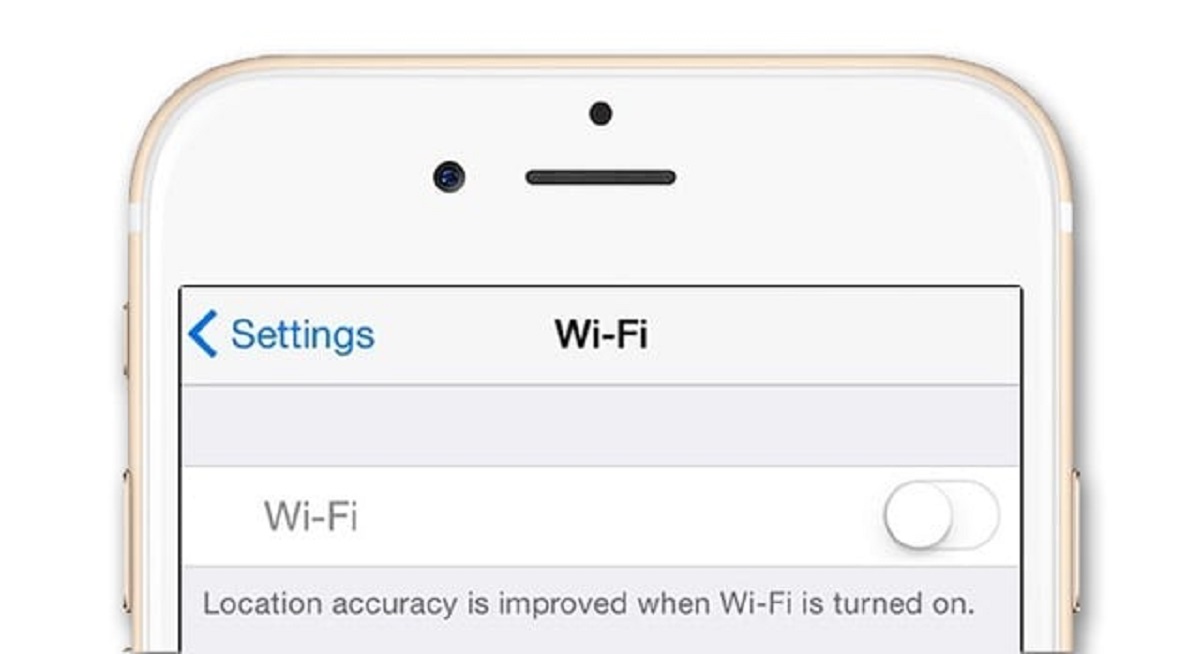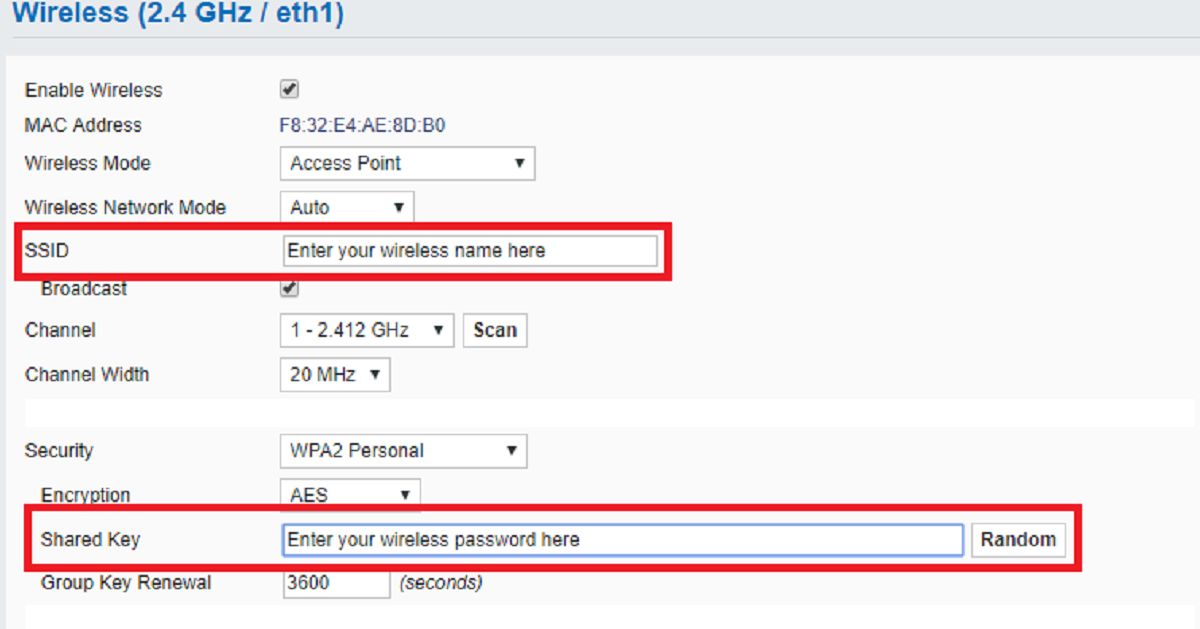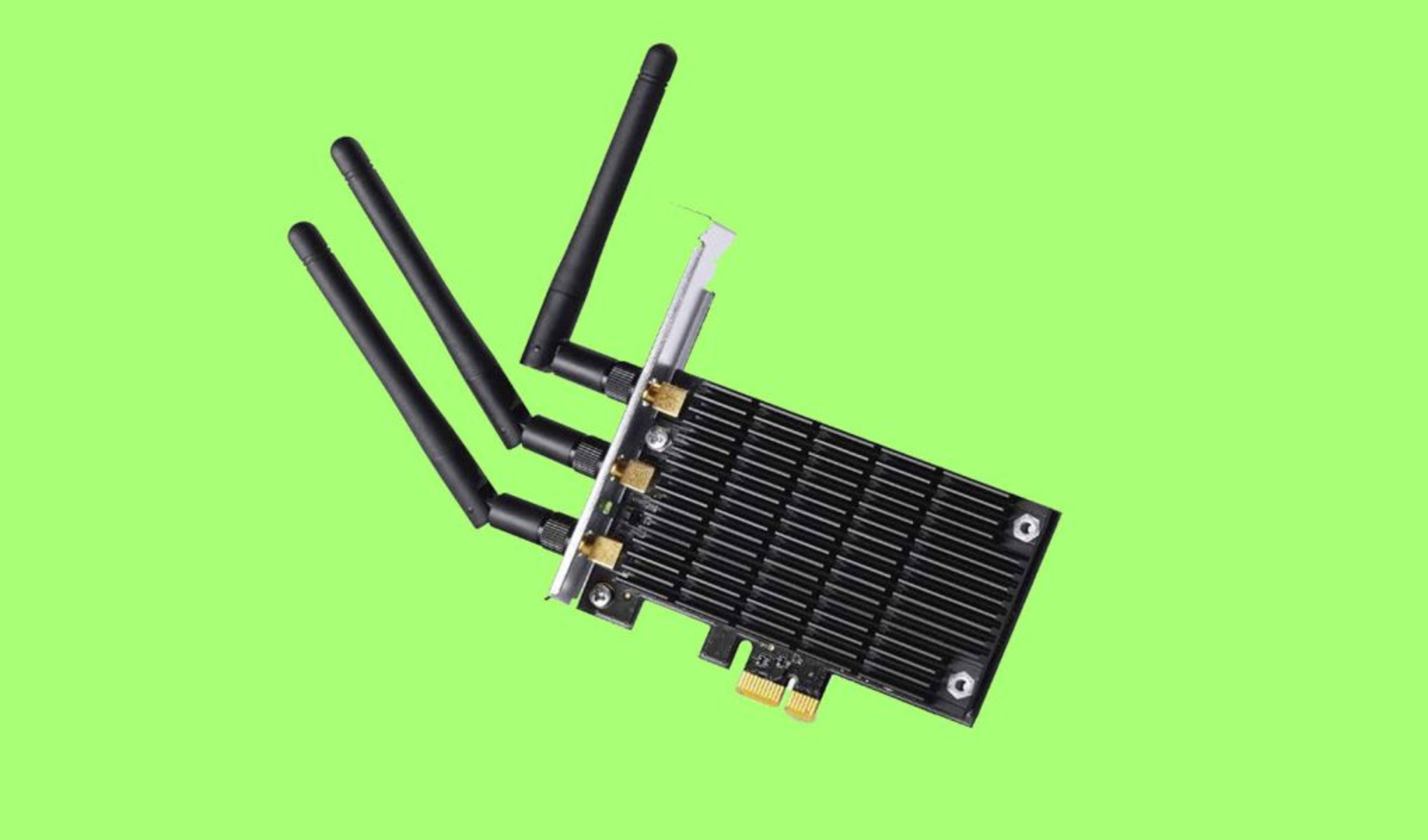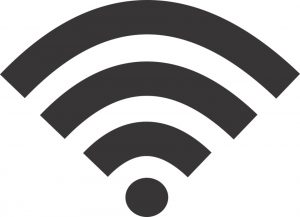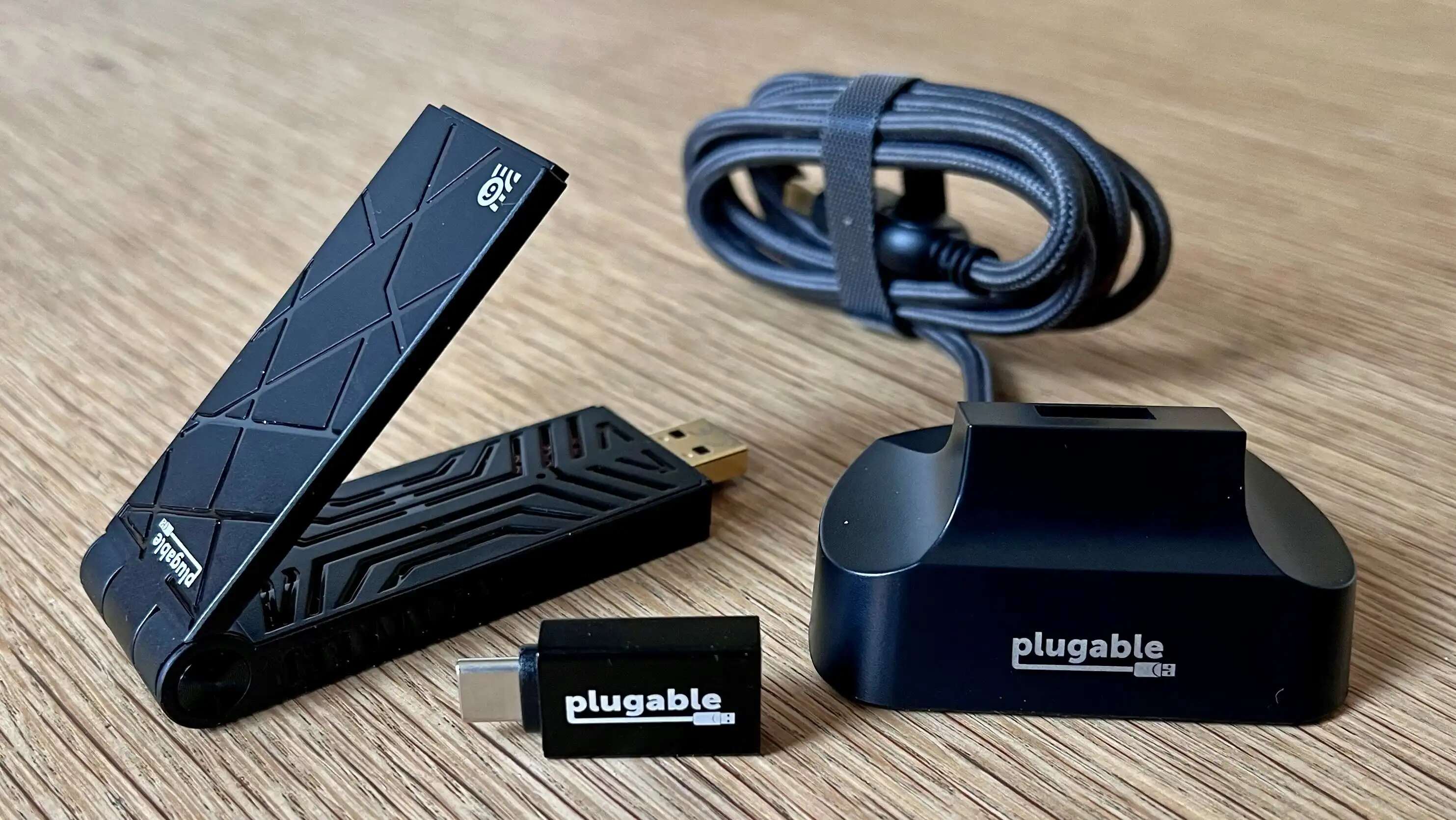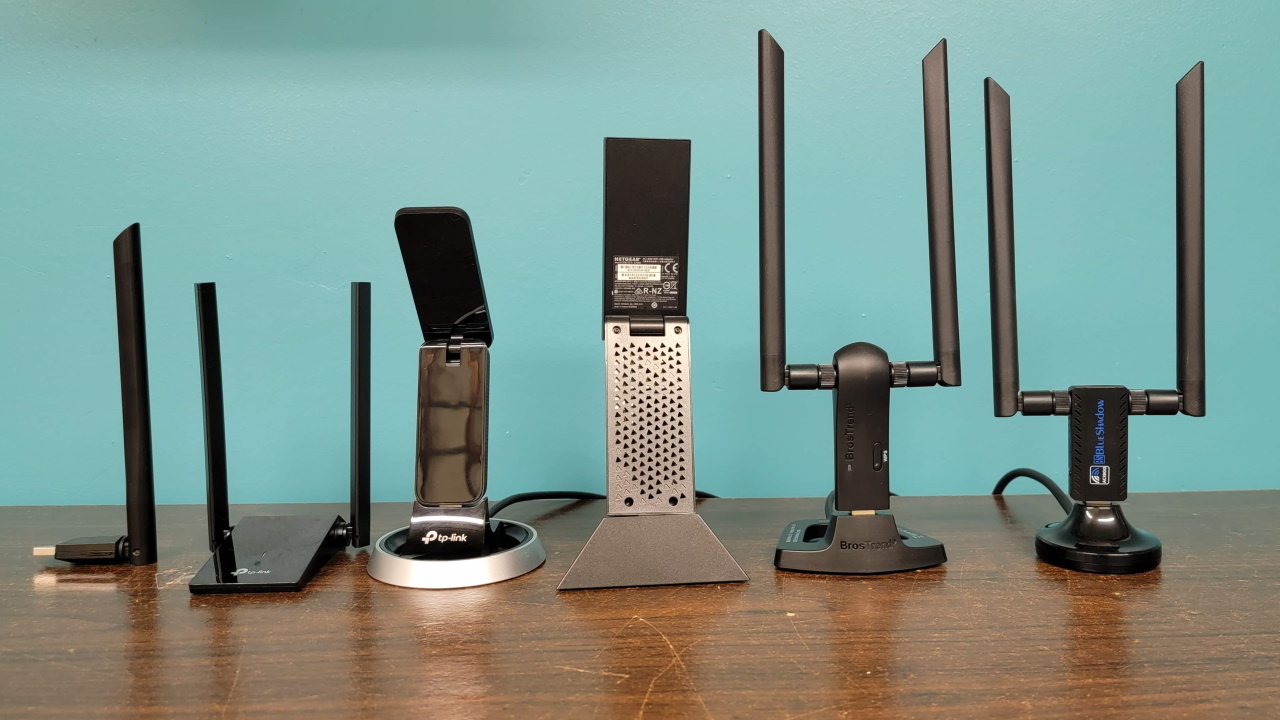Possible Reasons for PC Not Connecting to Wifi
It can be frustrating when your PC fails to connect to your Wifi network. There are several possible reasons for this issue, ranging from simple to more complex. By understanding these reasons, you can troubleshoot and resolve the problem effectively. Here are some common causes for your PC not connecting to Wifi:
1. Wifi Network Outage: Sometimes, the Wifi network itself may be experiencing an outage or temporary disruption. Contact your Internet Service Provider (ISP) to check if there are any known issues or outages in your area.
2. Incorrect Wifi Password or Network Name: Double-check that you have entered the correct Wifi password and network name (SSID) on your PC. Typos or inaccuracies can prevent your PC from connecting.
3. Limited Wifi Signal Strength: If your PC is far away from the Wifi router or there are physical obstructions like walls, the signal strength may be weak. Move closer to the router or consider using a Wifi range extender to improve the signal.
4. Network Adapter Driver Issues: Outdated or incompatible network adapter drivers can cause problems with connecting to Wifi. Update your network adapter drivers to the latest version from the manufacturer’s website.
5. Obsolete or Incompatible Network Hardware: If your PC’s Wifi hardware is outdated or incompatible with your router, it may not be able to establish a connection. Verify that your PC’s Wifi hardware supports the network type and encryption used by your router.
6. Firewall or Antivirus Blocking Wifi Connection: Sometimes, your PC’s firewall or antivirus software may be blocking the Wifi connection. Temporarily disable or configure the settings to allow the Wifi connection.
7. IP Address Conflict: If there is an IP address conflict between your PC and another device on the network, it can prevent your PC from connecting. Restart your PC and the router to resolve any IP address conflicts.
8. Router Configuration Issues: Incorrect router settings or misconfiguration can prevent your PC from connecting to Wifi. Check the router settings, including DHCP, subnet mask, and Wifi security settings, to ensure they are properly configured.
9. Interference from Electronic Devices: Other electronic devices like cordless phones, microwave ovens, or Bluetooth devices can cause interference with the Wifi signal. Keep such devices away from the router and PC to minimize interference.
10. Windows Updates Causing Wifi Connectivity Problems: Sometimes, Windows updates can cause conflicts with Wifi drivers or settings. Check for any recent Windows updates and try rolling them back or reinstalling the network adapter drivers.
By considering these possible reasons for your PC not connecting to Wifi, you can take the necessary steps to resolve the issue. If none of these solutions work, contacting your ISP or seeking technical assistance would be advisable to get your PC back online.
Wifi Network Outage
If your PC is not connecting to Wifi, the first thing to check is whether there is a network outage. Wifi network outages can happen for various reasons, such as maintenance work, technical issues, or disruptions in the internet service provided by your ISP. When there is an outage, it means that the Wifi network itself is experiencing a temporary interruption in connectivity.
To determine if there is a network outage, you can contact your ISP or check their website for any reported issues. They can provide you with information about the reported outages in your area and give an estimated timeframe for the restoration of services. Additionally, you can try reaching out to your neighbors or colleagues to see if they are also facing the same connectivity issues, which could indicate a widespread outage.
If a network outage is confirmed, unfortunately, there is not much you can do but wait for the issue to be resolved by your ISP. During this time, you can try using alternative means for internet access, such as connecting to a mobile data network or using a public Wifi hotspot if available.
However, if there is no reported network outage and all other devices are connecting to the Wifi network except your PC, then the problem may lie elsewhere. In such cases, proceed with the other troubleshooting steps mentioned in this article to identify and resolve the issue.
It’s important to note that network outages are usually temporary in nature and are typically resolved relatively quickly. If the issue persists beyond the expected timeframe, it would be worth contacting your ISP again to inquire about the status of the outage and seek further assistance.
Remember, network outages are beyond your control, so it’s essential to exercise patience and understanding. Stay informed and updated through communication channels provided by your ISP, and they will help you get back online as soon as possible.
Incorrect Wifi Password or Network Name
One of the most common reasons why a PC fails to connect to Wifi is due to incorrect Wifi password or network name (SSID) entry. It’s important to ensure that you have entered the correct credentials to establish a successful connection.
First, double-check the Wifi password you are entering on your PC. Wifi passwords are case-sensitive, so make sure you have entered it exactly as it is, including any uppercase or lowercase letters, numbers, or special characters. If you are unsure about the password, you can find it on the back or bottom of your router or refer to the documentation provided by your ISP.
In addition to the password, verify that you have selected the correct network name (SSID) of your Wifi network. Sometimes, there may be similar networks in the vicinity, and mistakenly connecting to the wrong network can prevent your PC from establishing a connection. Ensure that you are connecting to the correct network name associated with your router.
If you are confident that the password and network name are correct, but your PC still fails to connect, there might be an issue with your router’s configuration. In such cases, you can try rebooting your router by unplugging it from power, waiting for a few seconds, and then plugging it back in. This simple step can sometimes resolve configuration-related issues and allow your PC to connect to Wifi.
If you are still unable to connect, it’s worth trying to forget the network on your PC and reconnecting to it. This can be done by accessing the network settings on your PC, finding the Wifi network in question, and selecting the option to forget or remove the network. Afterward, search for available networks again, select your Wifi network, and enter the correct password and network name to establish a fresh connection.
By ensuring the correct entry of Wifi password and network name, you can eliminate a common cause of connection issues. However, if the problem persists, you may need to explore other potential reasons and solutions to get your PC successfully connected to Wifi.
Limited Wifi Signal Strength
When your PC is not connecting to Wifi, limited signal strength can be a contributing factor. The distance between your PC and the Wifi router, as well as physical obstructions, can affect the strength and quality of the Wifi signal.
If your PC is located far away from the router, the Wifi signal may weaken, making it difficult for your PC to establish a reliable connection. To overcome this, try moving your PC closer to the router and see if the signal improves. This can be as simple as repositioning your PC or using it in a different room if possible.
In some cases, physical obstructions such as walls, floors, or other structures can weaken the Wifi signal. Thick walls or materials like concrete and metal can impede the signal, reducing its strength and reach. If you suspect that physical obstructions are causing the limited signal, try repositioning the router to a more central location in your home or office. This can help improve the signal coverage and ensure better connectivity throughout the premises.
If moving your PC or the router is not feasible, you can consider using a Wifi range extender or a mesh Wifi system. These devices can boost the Wifi signal and extend its range, helping you overcome limited signal strength in certain areas of your home or office.
Furthermore, it’s important to note that Wifi signals can also be affected by interference from other electronic devices. Devices such as cordless phones, microwave ovens, Bluetooth devices, and even neighboring Wifi networks operating on the same channel can cause signal interference. To minimize interference, keep such devices away from the router and your PC, and consider changing the Wifi channel on your router to one that is less congested.
By addressing limited signal strength and minimizing interference, you can significantly improve the Wifi connectivity for your PC. However, if the issue persists, it may be necessary to explore other potential causes and solutions to resolve the connectivity problem.
Network Adapter Driver Issues
Network adapter drivers play a crucial role in enabling your PC to connect to Wifi networks. Outdated or incompatible drivers can often cause connectivity issues. If your PC is not connecting to Wifi, it’s worth checking and updating your network adapter drivers to ensure they are up to date.
To determine if network adapter driver issues are the reason for the problem, follow these steps:
1. Open the Device Manager on your PC. You can access it by right-clicking on the “Start” button and selecting “Device Manager” from the menu.
2. In the Device Manager, expand the “Network adapters” section to see the list of network adapters installed on your PC.
3. Locate the network adapter that corresponds to your Wifi device. It is usually named with the manufacturer’s name or the model of your PC.
4. Right-click on the network adapter and select “Update driver” from the context menu. This will initiate the process of updating the driver.
5. Choose the option to search automatically for updated driver software. Windows will then search for the latest driver version and install it if available.
6. If Windows does not find an updated driver, you can visit the manufacturer’s website for your PC or the network adapter manufacturer’s website to manually download and install the latest driver version.
Updating your network adapter drivers can potentially resolve issues related to compatibility, stability, and bug fixes. It ensures that your PC has the necessary software to communicate effectively with Wifi networks.
If updating the driver does not resolve the connectivity problem, you can also try uninstalling the driver and then reinstalling it. To do this, follow similar steps as mentioned above, but instead of selecting “Update driver,” select “Uninstall device.” After uninstalling, restart your PC, and Windows should automatically reinstall the driver. This process can help in resolving any corrupted driver files that might be causing the connectivity issue.
By keeping your network adapter drivers up to date and addressing any driver-related issues, you can enhance the performance and stability of your PC’s Wifi connectivity.
Obsolete or Incompatible Network Hardware
Obsolete or incompatible network hardware can be a root cause of your PC’s failure to connect to Wifi. If your network hardware is outdated or does not support the network type or encryption used by your router, it may prevent your PC from establishing a successful connection.
First, check whether your PC’s Wifi hardware is compatible with the specific Wifi standards and protocols used by your router. This information can usually be found in the technical specifications of your PC or by referring to the manufacturer’s documentation. Ensure that your PC’s Wifi hardware supports the required standards such as 802.11ac, 802.11n, etc.
If your PC’s hardware is outdated or incompatible with the required standards, you may need to consider upgrading your network hardware. This can involve purchasing a new Wifi adapter that is compatible with your PC and supports the necessary Wifi standards. You can consult with a computer technician or refer to user reviews and recommendations to find a compatible and reliable Wifi adapter for your PC.
In some cases, the issue may not lie with the PC’s Wifi hardware, but rather with the router’s hardware. Older routers may not support newer Wifi standards or encryption methods. If this is the case, upgrading your router to a newer model that is compatible with your PC’s Wifi hardware can help resolve the connectivity issue.
It’s also worth noting that using outdated firmware on your router can lead to compatibility issues with newer Wifi devices, including your PC. Ensure that your router’s firmware is up to date by accessing the router’s administration interface and checking for any available firmware updates. If applicable, download and install the latest firmware provided by the router manufacturer.
By ensuring that your network hardware is up to date and compatible with your PC and router, you can eliminate hardware-related obstacles that may prevent your PC from connecting to Wifi.
Firewall or Antivirus Blocking Wifi Connection
Your PC’s firewall or antivirus software can sometimes interfere with the Wifi connection, preventing your PC from establishing a successful connection. The security measures put in place by these software applications can mistakenly identify the network as a potential threat and block the connection.
To determine if the firewall or antivirus is the cause of the problem, you can temporarily disable them and try connecting to the Wifi network. Keep in mind that disabling these security measures temporarily is done for troubleshooting purposes only, and it’s important to re-enable them once the testing is complete.
Disabling the firewall can usually be done through the security settings or control panel of your PC. Look for an option to disable the firewall temporarily and try connecting to Wifi again. If the connection is successful, it signifies that the firewall was blocking the connection.
Similarly, if you suspect that the antivirus software is blocking the Wifi connection, open the antivirus program and look for options to temporarily disable the network protection or firewall component. Once disabled, attempt to connect to the Wifi network again to see if the issue is resolved.
If disabling the firewall or antivirus software resolves the connectivity issue, you may need to reconfigure the settings to allow the Wifi connection. Look for options in the security software to whitelist the network or add it as a trusted network. This will prevent the firewall or antivirus from blocking the connection in the future.
It’s important to note that disabling the firewall or antivirus software exposes your PC to potential risks, so it should be done with caution. Ensure that you have an up-to-date antivirus program and only disable the security measures temporarily for troubleshooting purposes.
If the issue persists even after disabling the firewall and antivirus, it’s worth exploring other potential causes and solutions to resolve the problem with your PC’s Wifi connection.
IP Address Conflict
An IP address conflict can occur when two or more devices on the same network are assigned the same IP address. This conflict can prevent your PC from connecting to Wifi and cause connectivity issues. Resolving an IP address conflict is essential to establish a successful connection.
To check for an IP address conflict, follow these steps:
1. On your PC, open the Command Prompt by pressing the Windows key + R, typing “cmd,” and pressing Enter.
2. In the Command Prompt window, type the command “ipconfig” and press Enter. This will display the IP configuration details of your PC.
3. Look for the “IPv4 Address” under the relevant network connection. Note down the IP address displayed.
4. Repeat the process on another device that is connected to the same Wifi network, such as a smartphone, tablet, or another PC, and note down its IP address as well.
5. Compare the IP addresses noted down. If the IP addresses are the same, it indicates an IP address conflict.
If you have identified an IP address conflict, you can resolve it by following these steps:
1. Disconnect or turn off all devices connected to the Wifi network, including your PC.
2. Restart your router by unplugging it from power, waiting for a few seconds, and then plugging it back in.
3. After the router restarts, turn on your PC and reconnect it to the Wifi network. The router will assign a new IP address to your PC, avoiding the conflict.
4. Reconnect the other devices one by one to the Wifi network, allowing the router to assign unique IP addresses to each device.
By resolving the IP address conflict, you can ensure that each device on the Wifi network has a unique IP address, allowing for seamless connectivity.
If the issue of IP address conflicts persist, it may be necessary to contact your ISP or a network technician for further assistance in resolving the problem.
Router Configuration Issues
Incorrect router configuration can also lead to connectivity problems when trying to connect your PC to Wifi. Issues with the configuration settings can prevent your PC from establishing a successful connection. Here are some router configuration issues to consider:
DHCP Settings: Dynamic Host Configuration Protocol (DHCP) manages the allocation of IP addresses to devices on the network. If the DHCP settings on your router are misconfigured, it can result in connectivity issues. Ensure that DHCP is enabled on your router, allowing it to assign IP addresses automatically to devices connecting to the network.
Subnet Mask: The subnet mask determines the range of IP addresses that can communicate on a network. Make sure that the subnet mask configured on your router matches the subnet mask configured on your PC. If they don’t match, it can result in a network communication issue.
Wifi Security Settings: Wifi security protocols, such as WEP, WPA, or WPA2, ensure the confidentiality and integrity of the network. It’s crucial to configure the correct security settings on your router and ensure that your PC is using the same security protocol and passphrase. Mismatched security settings can prevent your PC from connecting to the Wifi network.
WiFi Channel: If your router is operating on a congested Wifi channel, it can result in slow or unreliable Wifi connections. Access your router’s administration interface and choose a Wifi channel that has less interference from neighboring Wifi networks. This can improve the overall performance and stability of your Wifi connection.
Ensure that your router’s configuration settings are correctly set up, matching the requirements of your network and devices. If you are unsure about the correct settings, refer to the router’s manual or contact the manufacturer’s support for assistance. Making the necessary adjustments to the router configuration can help resolve connectivity issues and establish a successful connection for your PC.
Interference from Electronic Devices
Interference from other electronic devices can disrupt the Wifi signal and cause connectivity issues for your PC. Certain devices or appliances, such as cordless phones, microwave ovens, Bluetooth devices, and even neighboring Wifi networks, can introduce interference and weaken the Wifi signal strength.
To minimize interference and improve Wifi connectivity, follow these steps:
Keep devices away from the router: Keep electronic devices that are known to cause interference away from your Wifi router. These devices include cordless phones, microwave ovens, baby monitors, and wireless speakers. The closer these devices are to your router, the higher the chance of signal interference.
Change the Wifi channel: If there are multiple Wifi networks operating on the same channel near your location, it can lead to signal interference. Access your router’s administration interface and change the Wifi channel to one that is less congested. This can minimize the interference and improve the overall performance of your Wifi connection.
Upgrade to a dual-band router: Dual-band routers operate on both the 2.4GHz and 5GHz frequency bands. The 5GHz band is typically less crowded and less susceptible to interference from other devices. Consider upgrading to a dual-band router to take advantage of the cleaner 5GHz band and reduce the chances of interference affecting your Wifi connection.
Use Wifi extenders or mesh networks: Wifi extenders or mesh networks can help extend the coverage of your Wifi signal, improving connectivity in areas further away from the router. By strategically placing these devices around your home or office, you can eliminate dead zones and reduce the impact of interference.
Interference from electronic devices can be intermittent and unpredictable. If you notice that your PC’s Wifi connection is affected by certain devices or situations, it can be helpful to experiment with different device placements and router configurations to minimize interference and achieve a stable Wifi connection.
By identifying and minimizing interference from electronic devices, you can improve the overall performance and reliability of your PC’s Wifi connection.
Windows Updates Causing Wifi Connectivity Problems
Sometimes, Windows updates can inadvertently cause problems with the Wifi connectivity on your PC. Issues like driver conflicts, software compatibility, or changes to network settings can lead to connectivity problems after installing updates.
If you are experiencing Wifi connectivity issues after a Windows update, here are some steps you can take to address the problem:
Roll back recent updates: If the Wifi issues started occurring after a recent Windows update, you can try rolling back the update. Go to the “Update & Security” section in the Windows Settings, select “Windows Update,” then click on “View update history.” From there, you can choose to uninstall selected updates and revert your system to a previous state.
Reinstall network adapter drivers: Windows updates sometimes override or interfere with network adapter drivers. In such cases, reinstalling the network adapter drivers can help resolve any conflicts. Go to the Device Manager, find your network adapter, right-click on it, and select “Uninstall device.” Afterward, restart your PC, and Windows will automatically reinstall the network adapter drivers.
Check network settings: Windows updates can occasionally modify network settings, such as IP configurations or network profiles. Ensure that your network settings are correctly configured by checking the network adapter properties and comparing them to your network setup. Adjust any discrepancies to match the required settings for your Wifi network.
Contact technical support: If the Wifi connectivity issues persist even after rolling back updates and reinstalling network drivers, it may be necessary to seek further assistance from technical support. Contacting your PC manufacturer or seeking help from Windows support can provide additional guidance and troubleshooting steps specific to your device and configuration.
It’s worth noting that Windows updates are important for security and performance improvements, so it’s generally advisable to keep your system up to date. However, in cases where a specific update causes issues with Wifi connectivity, taking the steps mentioned above can help resolve the problem.
By addressing Windows updates that may be causing Wifi connectivity problems, you can ensure that your PC maintains a stable and reliable connection to your Wifi network.
Troubleshooting Steps to Fix PC Wifi Connection
If your PC is not connecting to Wifi, there are several troubleshooting steps you can take to identify and resolve the issue. Here are some common troubleshooting steps:
1. Restart your PC: Sometimes, a simple restart can resolve temporary glitches or conflicts that may be preventing your PC from connecting to Wifi. Restart your PC and try connecting again.
2. Check Wifi network availability: Ensure that the Wifi network you are trying to connect to is available and functioning properly. Check if other devices can connect to the network. If they can, the issue may be specific to your PC.
3. Verify Wifi password and network name: Double-check that you have entered the correct Wifi password and network name (SSID) on your PC. Typos or inaccuracies can prevent your PC from connecting.
4. Update network adapter drivers: Outdated or incompatible network adapter drivers can cause connectivity issues. Update your network adapter drivers to the latest version from the manufacturer’s website.
5. Check hardware compatibility: Confirm that your PC’s Wifi hardware is compatible with the network type and encryption used by your router. If it’s not, consider upgrading your network hardware.
6. Disable firewall and antivirus temporarily: Firewall or antivirus software can sometimes interfere with Wifi connections. Temporarily disable them and check if your PC can connect to Wifi. Remember to re-enable them after testing.
7. Resolve IP address conflicts: Check for any IP address conflicts between your PC and other devices on the network. Restart your router and PC to obtain new IP addresses and resolve conflicts.
8. Adjust router settings: Ensure that your router’s DHCP, subnet mask, Wifi security settings, and firmware are correctly configured. Refer to the router’s manual or contact the manufacturer for assistance.
9. Minimize interference: Keep electronic devices that can cause interference, such as cordless phones and microwave ovens, away from your router. Consider changing the Wifi channel on your router to reduce interference.
10. Check for Windows updates: Ensure that your PC has the latest Windows updates installed. Updates can contain bug fixes and improvements that may resolve connectivity issues.
By following these troubleshooting steps, you can diagnose and resolve common issues that might be preventing your PC from connecting to Wifi. If the issue persists, contacting your ISP or seeking technical assistance may be necessary.









